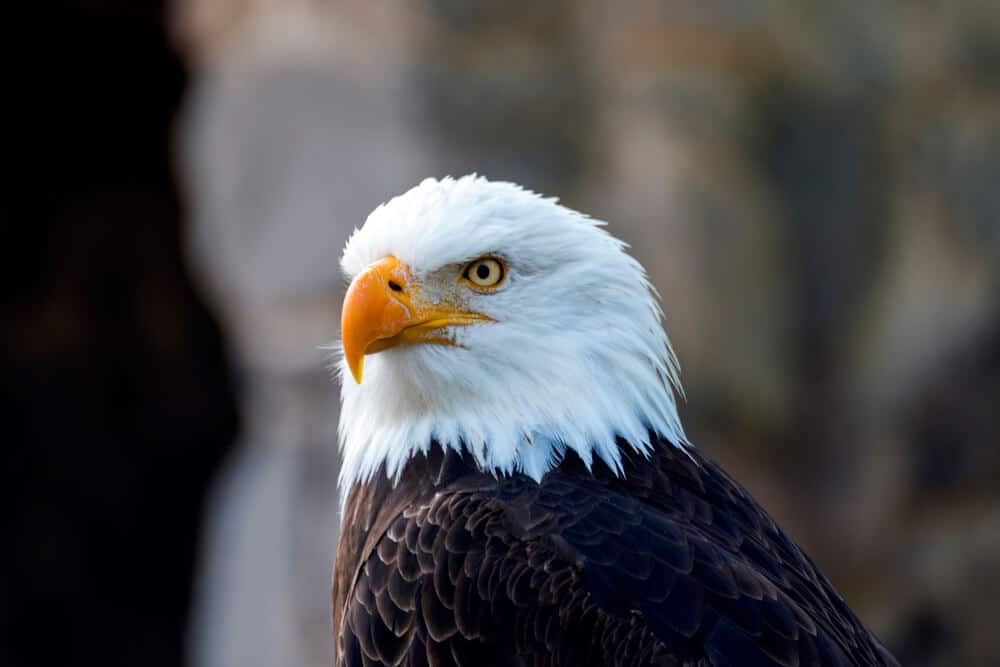Beautiful and Hardy, Bald Eagles can do well in a number of environments that other birds wouldn’t last a week in. So, how much cold can Bald Eagles survive and still thrive in?
Bald eagles are often found at Alaska coasts and islands. In the coastal regions of Alaska, the temperature usually stays between 40°F and 60°F in the summer. However, in winter, the temperature can be between 0°F and -30°F. Although some bald eagles migrate during the winters, most of them prefer staying there. So you can think how cold these great birds can tolerate!
Interested to know how these amazing birds are able to do so well in chilling temperatures? Then let’s talk about Bald Eagles, the cold, and the defenses that Nature has provided so that these resilient raptors can survive it.
Bald Eagle plumage is the first part of the equation

The plumage of Bald Eagles is an enormous part of their success when it comes to weathering the worst winters. Thousands of feathers are involved in helping to keep the bird warm and dry, and as you might suspect layering is an important key to this strategy’s success.
Starting off, you have a layer of down, which is not only light and fluffy, but which serves to trap air. With this air trapped so close to the body, heating it requires minimal energy, so the Bald Eagle is basically surrounded with a warm cloud of air and fluffy feathers.
So, how do they stay waterproofed? Well, that part has to do with the Eagle’s contour feathers, which overlap much the same way as shingles on a roof. These contour feathers provide the bird’s overall shape, but they are also waterproof, and this waterproofing is further reinforced by a gland at the base of the bird’s tail.
Called the ‘Preen gland’ or more formally, the ‘uropygial gland’, this little evolutionary gift produces an oil that helps to further waterproof and protect the feathers. Most birds have these and like the Bald Eagle, take advantage of these oils to help ensure the integrity of their feathers for protection against the elements.
Blood flow and Thermal regulation also help to keep the eagle warm
During extreme colds, blood flow changes in Bald Eagles as it does with many animals, but Bald Eagles have evolved a very useful way to take advantage of this. During extreme cold, less blood goes to the extremities and to the eagle’s skin, but there is increased blood flow to the stomach.
This allows the Bald eagle to process calories more efficiently so that they are wasting very little – if any – of their food. This is very important, as there are no guarantees of a successful hunt, but every bit of prey that is captured and ingested is going to be put to good, efficient use.
Thermoregulation is another little trick that helps the eagles to brave the wild Alaskan and Canadian winters. When it’s cold out, when the eagle decides to ‘stay put’ for a while, it will lower its body temperature by 1.8 degrees.
This doesn’t sound like much, but it makes a world of difference, as this temperature change reduces the temperature gradient so that there is less of a contrast between the outside environment and the eagle’s body temperature.
With a lower body temperature to maintain, less energy is expended than would be needed if the eagle was trying to ‘springtime’ body heat and so this further steels them against the cold.
Good nesting, eating, and hunting habits also help these raptors to survive
Eagles are smart about where they shelter and nest. Rather than seeking out open areas, they tend to target warmer ‘micro climes’ where they won’t be directly exposed to inclement weather. For instance, areas with dense branches or hollows in bluffs provide plenty of space, but more importantly, shelter from the winds and weather.
To help ensure that their energy levels are high and to minimize food loss from sneaky competitors that are also looking for a nice winter meal, Bald Eagles will gorge on their food, eating as much as possible as quickly as they can. This gives the raptors an enormous calorie boost and helps them to avoid wasting any food.
Finally, when it comes to hunting, Bald eagles ‘stack the deck’ by foraging in groups. By observing other birds in their area, they are able to find food quickly and more efficiently, especially since these powerful raptors can simply take what other eagles and smaller birds find.
Why do some Bald Eagles migrate, if the temperatures don’t bother them?
Not all Bald Eagles will migrate, but some do, and the reasons behind it are usually twofold. First and foremost, they will migrate if the food in their current territory is simply too scarce to live on, as one might expect.
The second reason that they do this is an interesting concept called ‘site fidelity’, which is simply an attraction that these birds feel to revisit the place where they were born. While they won’t go to their specific nest, they will be attracted to the area, unless it’s simply too crowded when they arrive.
It’s a strong compulsion – some birds will travel in excess of 200 miles due to site fidelity – and while they won’t revisit their original nest, they will typically build a new one in the area where they remember being born.
How do Bald Eagles keep their eggs from freezing?
The optimal temperature for a Bald Eagle egg to hatch falls between 80.6 to 104.9 degrees Fahrenheit, so how on earth do these birds manage to protect themselves in the snow? Well, the average temperatures of adult eagles are between 102.2 to 106.1 degrees. This is certainly warm enough for the eggs, but how is the heat transferred?
Both the male and female take turns keeping the eggs warm and the heat is transferred by the means of a ‘brood patch’. This is a patch of skin that is located at the male and female’s breast, which the Bald eagles will press against the eggs so that warmth from their bodies is effectively transferred.
By covering and uncovering the eggs, the temperatures tend to be kept in the upper 90s, so that optimal hatching heat is consistently maintained until the new eaglets are ready to crack their eggs and emerge. Overall, the eggs take 35 days before the eaglets may emerge, and all of them should hatch within a 3 – 6 day shared period.
Some Final Thoughts on Bald Eagles and survival in the cold
So, in this article, we’ve talked about how much cold can Bald eagles survive and while we don’t have exact temperatures where they might expire, we DO know that they survive quite well in the Arctic. In the state of Alaska and in Northern Canada, these birds withstand the cold and always come back for more!
They can do this because of the warm air trapped in their feathers, as well as the natural waterproofing which nature has provided, but other evolutionary innovations also are at play. Thermal regulation, along with blood flow that helps for more efficient digestion, and the oils from their uropygial gland reinforcing their feathers make for excellent winter comfort.
Finally, by choosing efficient shelters, hunting in groups, and gorging so that the birds can get a hefty energy boost, the Bald eagles are able to stay well fed and to make the most of their energy when they lower their body temperature and conserve heat. It’s an amazing system when it comes together, all courtesy of the amazing Nature!


